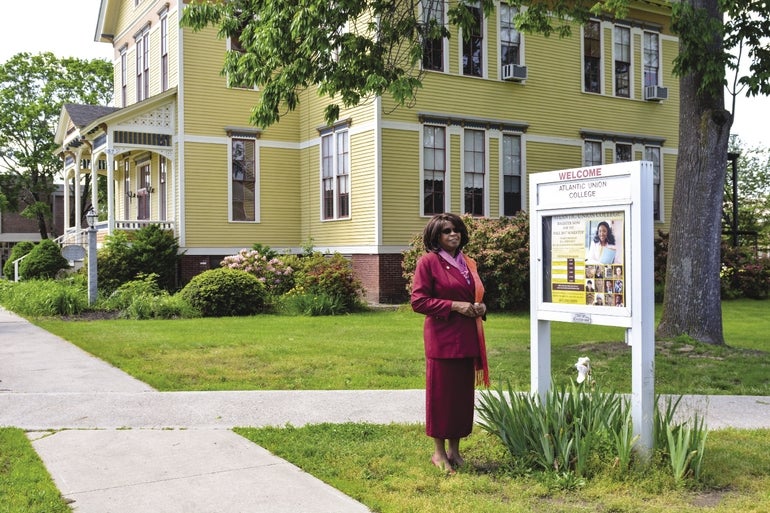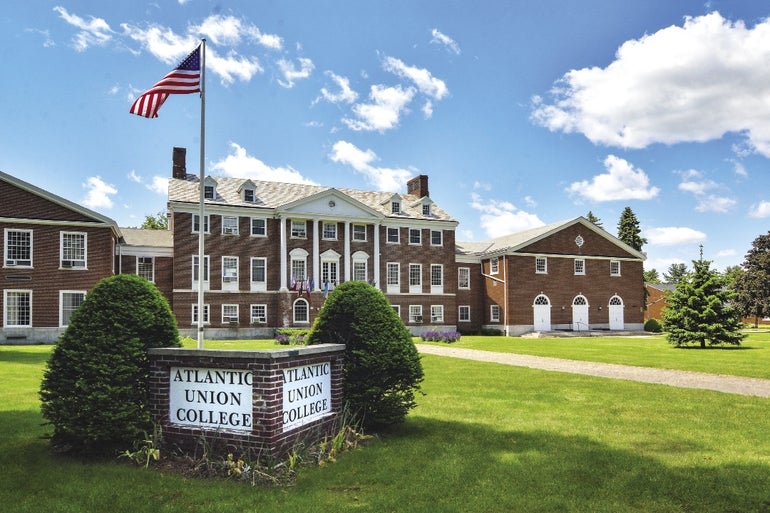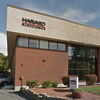Atlantic Union relying on faith in seeking college revival
Avis Hendrickson sees Atlantic Union College as both a startup and a turnaround, words not often given to a 135-year-old school. But the Lancaster college is in an usual situation, and its president knows it.
At a time when many small schools have closed, been forced to merge or not expected to survive, Atlantic Union is trying to re-establish itself after shutting down classes for four years once it lost its accreditation and ability for students to use federal financial aid. The college remains heavily reliant on church subsidies and has fewer than 50 students, who are still unable to earn degrees from the school or receive financial aid.
None of that has deterred Hendrickson, who became president in 2015 after the school reopened classes.
“We are drawing students because they are coming,” she said confidently and matter-of-factly.
The New England Association of Schools and Colleges pulled Atlantic Union's accreditation in 2011, and its 400-plus students were forced to transfer elsewhere, but the organization has given the college approval seek reaccreditation.
“We weren't turned down, we were given a go-ahead, which is great because we could have been turned down,” Hendrickson said.
Accreditation from the association once more is still several years away, and not until 2019 can students earn a degree from Atlantic Union. Until then, students earn credits and transfer elsewhere.
The Seventh-day college
Atlantic Union has long relied on subsidies from the Seventh-day Adventist Church for a huge chunk of its revenue, including nearly 90 percent of its $4.5 million in 2015 income, according to the college's 2016 annual financial report.
Thanks to the church revenue, the school yielded positive margins in 2014 and 2015, after losing money in 2012 and 2013. Atlantic Union had $2.9 million available in unrestricted net assets at the end of 2015, the last year available.
The college is even having to defend itself to its largest financial supporters within the church.
One source of church funding, the Southern New England Conference, which is based immediately off Atlantic Union's campus, voted in April to take $800,000 it had traditionally given to the college and instead direct it to financial help for college-age youth in the church. The conference cited lower-than-expected enrollment and what it called an unsustainable trend of rising staffing levels, and said it found Atlantic Union was not in a position to service the college-age youth of the conference.
David Dennis, the conference president, said the group will consider an appeal from the college.
“It's still kind of internal business,” Dennis said. “We're still working lots of things out.”
Aside from making ends meet financially, Atlantic Union has other challenges, too, including getting its name before prospective students. The school isn't included on the U.S. Department of Education's College Scorecard, and the New England Association of Schools and Colleges still lists Atlantic Union on a list of defunct schools.
Fighting for money in a tough market
Colleges of all sizes are struggling in what is often an arms race for the best facilities. Bain & Co., the Boston management consulting firm, estimated in 2012 that 43 percent of colleges are spending more than they can afford in ill-advised plans to build their way to prosperity.
Colleges face the same challenges no matter their size, said Will Wootton, the former president of the tiny Sterling College in northern Vermont, writing in the Chronicle of Higher Education last year.
“So the problem, compounded at smaller institutions where the margins for error are tiny,” Wootton added, “is not so much lack of money, which often seems to happen all of a sudden, but a long-term lack of professionalism, independence and leadership at the board (of trustees) level.”
Worcester has seen several former colleges close, including Central New England College of Technology and Worcester Junior College, which both closed in 1989 because of deep debt, and Burdett College, when shuttered in 2000 because of a drop in enrollment, when it had only 135 students. Elsewhere, Marian Court College, a Catholic school in Swampscott, closed in 2015.
Nationally, an average of five schools closed each year in the decade ending in 2014, according to Moody's Investors Service. Moody's predicted small colleges would continue losing market share to larger ones, making it harder to make investments to attract students.
“We're not saying the sky is falling for the sector,” said Dennis Gephardt, a Moody's analyst who worked on the report. But, he added, such small schools are projected to have only very small revenue increases in coming years, making it very difficult to invest in improvements.
Given the financial strain so many small schools are under, it's a wonder why there aren't more closing, Gephardt said. He attributed the fact that so many are still around to a determined attitude and what is often supportive and deep-pocketed alumni who don't want to see their school close.
“They tend to be really tenacious,” he said.
A revival success story
A small liberal arts school in Ohio, Antioch College, could give Atlantic Union hope. Antioch closed in 2008 but reopened in 2011 after an alumni-led group bought the campus for $6 million from its owner that had forced it to close, Antioch University.
“We were furious. We could not believe that the university would do such a thing,” said Mark Reynolds, an alumnus of the school and now its director of marketing and communications. “We were willing to make whatever investment we needed to make.”
By 2011, the school reopened with 35 students and didn't charge tuition for the first four years, when it was still unaccredited, Reynolds said. Atlantic Union charges $17,998 for residents and $11,498 for commuters as of last year.
“Someone along the way found out that we were giving out free tuition, and we were inundated with applications,” he said, before cautioning against the notion its troubles are now in the past.
“Just because you've reopened, doesn't mean all your problems are solved,” he said. “There will be fits and starts along the way.”
Barbara Brittingham, the president of New England Association of Schools and Colleges' commission for higher education, called the road back to accreditation a long process for Atlantic Union.
“We're happy to work with them,” she said. “It'll be challenging for them.”
Catering to Seventh-day students
Religion is a major part of Atlantic Union, and faith appears to be central to why the school believes it can grow and thrive again.
All students are required to take a religion course and attend worship services. Its only two majors are theology and health science & biology, which Hendrickson said focuses on how to be healthy according to God's message in the Bible. Students are banned from wearing jewelry other than wedding or engagement rings, watches or medical bracelets, as part of a push for modest appearance. Dorms are same-sex only, and there's a 10 p.m. curfew for students.
A majority of its students are Seventh-day Adventists, including Eric Jean-Baptiste, a 34-year-old from Shrewsbury who's studying religion in hopes of joining the ministry. He was not discouraged by the school's lack of accreditation but instead excited a school he had wanted to attend had reopened.
“It was actually a very great convenience,” Jean-Baptiste said. Although he doesn't know what he'll do to earn his degree, he's thankful he chose a small school where he said he can get one-on-one attention.
“The president knows you by name,” he said, contrasting that intimacy with the huge classes he once sat in at UMass Amherst.
Relying on faith for the future
In an interview inside her spacious office inside the traditional brick Haskell Hall, Hendrickson began by saying a quick prayer and then quoted scripture several times. She said she prayed about whether to become the Atlantic Union president and take on the turnaround attempt.
“I thought, 'As good as I know God has been to me through life's journey, I would make the attempt to help the denominational institution,'” she said.
Alumni are doing what they can to pull Atlantic Union back to how the school was as they remember it. John Schumacher-Hardy, who still lives in Lancaster, graduated in 1992 at a time when he said there were more than 1,000 students taking classes there.
“It was flourishing,” Schumacher-Hardy said, recalling active spiritual and social programs and a diverse student body. “I was glad to be there when I was.”
The alumnus, an active Seventh-Day Adventist who still closely follows how the school has been doing, attributed the decline in the past quarter century to a natural ebb-and-flow and unpopular choices by administrators. (The number of Seventh-day Adventists in southern New England has actually increased in the past two decades by 73 percent, to nearly 18,000, according to the church).
Schumacher-Hardy, like others at Atlantic Union, is hopeful the school can once again attract students as it used to.
“It's a hurdle that must be overcome,” he said. “I'm hoping.”
From its student body of less than 50 this spring, Atlantic Union hopes to grow to 80 to 100 this fall, and ultimately match or pass almost 1,000 students it once had in Schumacher-Hardy's day.
“I am not limiting what the college can become,” Hendrickson said, “and the God I serve is not limiting it.”













0 Comments